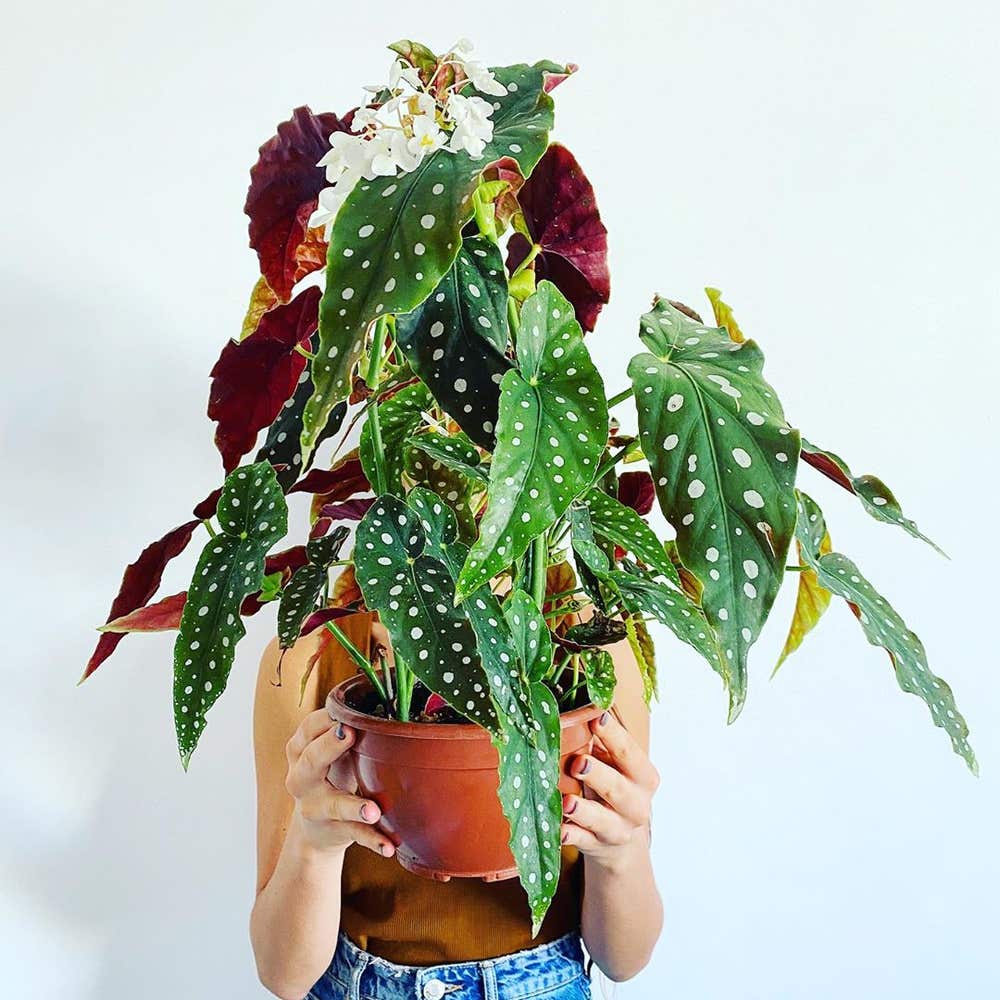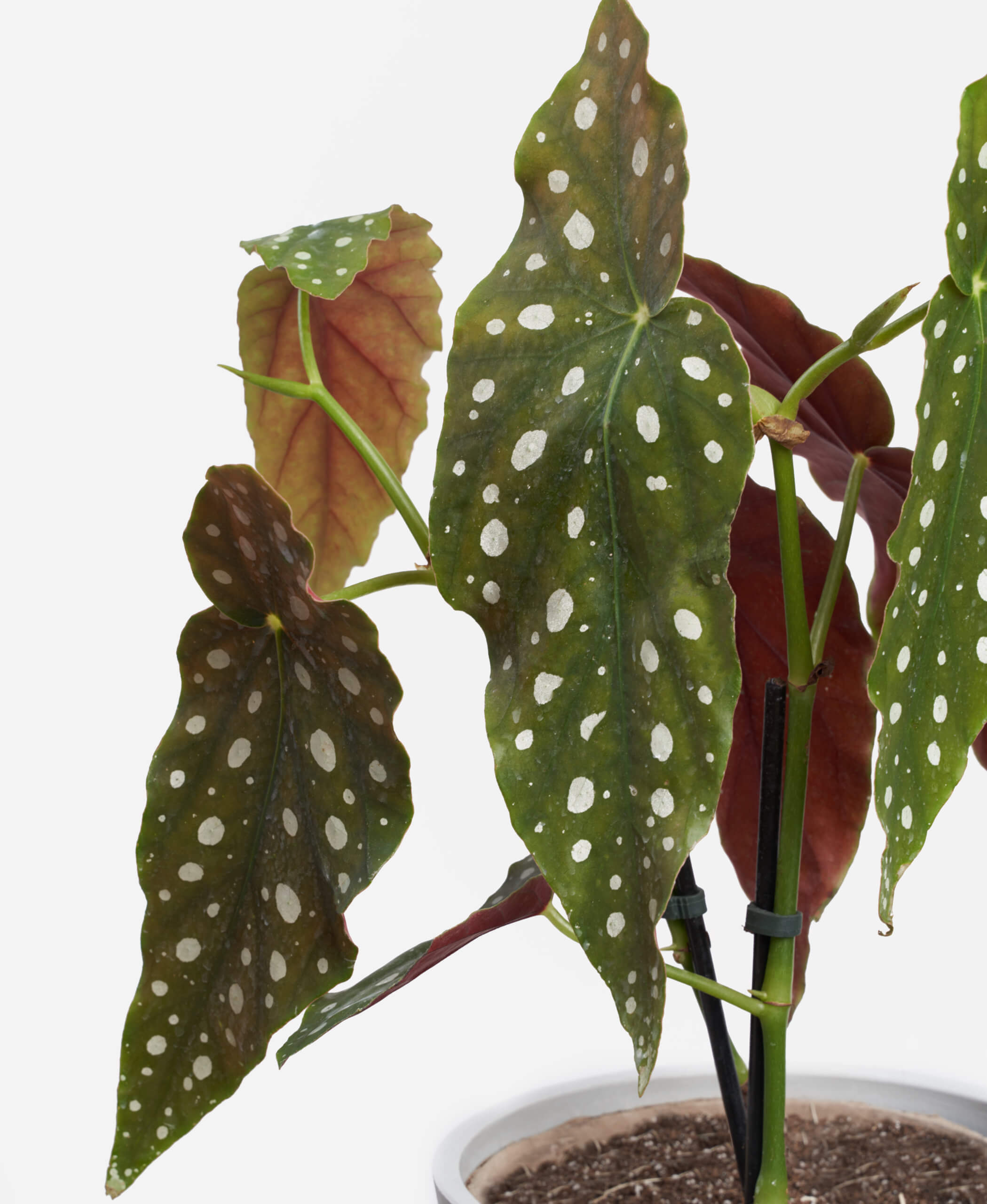The Spotted Begonia, scientifically known as Begonia maculata, is a popular houseplant renowned for its striking foliage. Its large, ovate leaves are adorned with distinctive silver spots, adding a touch of elegance to any indoor space. While these plants are relatively low-maintenance, understanding their specific care requirements is essential to ensure their optimal growth and vibrant appearance.
Light Requirements
Spotted Begonias thrive in bright, indirect light. They can tolerate lower light conditions, but their growth may be slower and their foliage less vibrant. Avoid exposing them to direct sunlight, as this can scorch their delicate leaves. An east-facing window is an ideal location, providing ample morning light without the harsh afternoon sun.
Watering
Proper watering is crucial for the health of your Spotted Begonia. These plants prefer consistently moist soil, but they are susceptible to root rot if overwatered. A good rule of thumb is to water your plant when the top inch of soil feels dry to the touch. Allow excess water to drain freely from the pot to prevent waterlogging.
During the winter months, when growth slows down, reduce the frequency of watering. Allow the soil to dry out slightly more between waterings to avoid root rot.
Humidity
Spotted Begonias appreciate high humidity levels, similar to their tropical origins. To increase humidity around your plant, you can use several methods:
:max_bytes(150000):strip_icc()/SPR_begonia-maculata-care-guide-6743839_03-8da5b8321cb2499cbc8ae01942ca7b8c.jpg)
Misting: Regularly mist the leaves with lukewarm water, especially during dry winter months.
Temperature
Spotted Begonias prefer warm temperatures, ideally between 65°F and 75°F (18°C to 24°C). They can tolerate slightly cooler temperatures, but prolonged exposure to cold drafts can damage their leaves. Avoid placing your plant near cold air vents or drafty windows.
Soil
A well-draining potting mix is essential for Spotted Begonias. A mixture of peat moss, perlite, and orchid bark provides excellent drainage and aeration. You can also use a commercial potting mix specifically designed for houseplants.
Fertilizing
Fertilize your Spotted Begonia during the growing season, from spring to early autumn. Use a balanced liquid fertilizer diluted to half strength every two to four weeks. Avoid fertilizing during the winter months when the plant is dormant.
Pruning
Pruning your Spotted Begonia can help maintain its shape and encourage bushier growth. Pinch back the growing tips to promote branching and a fuller plant. Remove any dead or yellowing leaves to keep your plant looking its best.
Propagation

Spotted Begonias can be propagated through leaf cuttings or stem cuttings.
Leaf Cuttings:
1. Select a healthy leaf with a long petiole (stem).
2. Cut the leaf into sections, ensuring each section has a vein.
3. Place the leaf sections on top of moist potting mix.
4. Cover the pot with a clear plastic bag to maintain humidity.
5. Place the pot in a warm, shaded location.
6. New plantlets will develop from the leaf veins.
Stem Cuttings:
1. Cut a stem section that includes at least two nodes.
2. Remove the lower leaves from the stem cutting.
3. Dip the cut end in rooting hormone powder.
4. Plant the stem cutting in a pot filled with moist potting mix.
5. Cover the pot with a clear plastic bag to maintain humidity.
6. Place the pot in a warm, shaded location.
7. Once the cutting has rooted, remove the plastic bag and gradually acclimate it to normal indoor conditions.

By following these care tips, you can enjoy the beauty of your Spotted Begonia for years to come.
:max_bytes(150000):strip_icc()/SPR_begonia-maculata-care-guide-6743839_03-8da5b8321cb2499cbc8ae01942ca7b8c.jpg?w=1200&resize=1200,0&ssl=1)